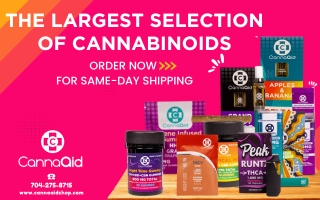This Ain’t Your Daddy’s Hemp Vol. 1
“Regardless of the wisdom of legalizing Delta-8 THC products, this Court will not substitute its own policy judgment for that of Congress.”
It’s not exactly a ringing endorsement, but we’ll take the win.
Those were the words of Judge D. Michael Fisher of the 9th Circuit Court in the May 2022 ruling that solidified Delta-8 THC as a legal compound. It didn’t usher in the era of Delta 8, exactly. That began four years earlier when the Agricultural Improvement Act, AKA, the 2018 Farm Bill became law and spawned off an entire new industry. But what Fisher’s words did provide was a new certainty in the space that ushered in a fresh wave of growth.
But even with that ruling on the books, and those words so unambiguous, the situation we daily encounter doesn’t share that clarity. Unless you have a degree in both law and biochemistry, navigating the minor cannabinoid space is tricky on the best day. Yes, legality has been established on one level, but there’s still the FDA to contend with, as well as state laws, not to mention the bylaws of local governing bodies. There is also the question of individual cannabinoids aside from Delta 8, and whether any or all of them adequately fit the legal definition of hemp.
The answer to the question of legality in our space is often a meandering one that isn’t based on a clear “yes” or “no.” It’s more of a “yes, well sort of, but not really, but yeah, pretty much.” If that makes you uncomfortable, it shouldn’t. It’s where we’ve always been. Until we have a complete overhaul of our system, both in terms of regulatory oversight and drug classification and scheduling, our market will always have gray tendencies. For the time being, the legality of these substances won’t be fully elucidated in the letter of the law. Instead, we will rely on legal opinions asserted in court battles (e.g., the 9th District ruling), the results of which will be used to fight yet more court battles.
When we do receive clarity, it’s not always good news. This past February, for example, the DEA handed down a specific ruling on THC-O, a very popular compound in the marketplace because of its powerful effects and relative ease of production—and the results weren’t ideal for a lot of our stakeholders. The ruling stated that THC-O, despite being an end product of legal hemp, was and is considered a Schedule 1 drug, as it does not occur naturally in the plant and is therefore a synthetic analog.
Despite this ruling and the ensuing industry-wide panic, THC-O has still lined the shelf of every store I’ve visited in the past month. Each experience has been equally dumbfounding. I stare blankly—probably for longer than I should in a public place. Don’t they know? I think back to my days as a sales rep and remember all those great customers I lost to mass raids like Log Jam and Synergy.
There was one store owner in rural Virginia whom I attempted to warn gently. I immediately regretted it. She politely, but firmly declined my offer of advice, stating that she dealt with warehouses nearby for all her products and they would never sell her something illegal. It got awkward.
If we’re going to operate in this space and deal in phytocannabinoids, we need an intimate knowledge of the topic. We need to pay attention to the latest developments at the federal, state and local levels that are occurring every day in real time and altering the landscape of our marketplace. We also need to understand the risks involved in selling psychoactive compounds, even when consensus is that the product is legal. We need a handle on all of this and we need to figure it out for ourselves—not simply take the word of some Reddit forum rando or fast-talking account rep.
The decision to tackle this development was a bona fide stop-the-presses moment, and as such, nearly triggered the collective heart attack of our entire design team. But it’s a topic that was clearly overdue for coverage. I knew what had to be done.
But first, I did what any rational, quizzical, and dedicated journalist (a title I only pretend to have when it suits me) would do in my place. I lit up a 50mg HHC-infused, terpene-enhanced hemp smoke from Coast, one the more recognized brands in the phytocannabinoid space.
This is not a normal decision for me. I attended CHAMPS regularly back in the early part of the last decade, AKA, the cowboy days of head shop consumables. Experience has taught me to assume the recipe for anything handed out on a Vegas show floor constitutes all the necessary ingredients for a genuine disaster. This is to say nothing about today’s industry. None of the products I errantly consumed in a fit of “when in Vegas” moments circa 2011 would make it through the door of one of today’s exhibitions. We’re older and wiser. But I am also older and wiser, and have determined to no longer “shit where I eat,” as the cliché goes.
But we’re bending the rules tonight for Coast for two reasons. First, as a former two-pack-a-day smoker, I enjoy the occasional hemp cigarette—and the folks at Coast were kind enough to drop a pack of their CBD Smokes in my swag bag at TPE. Brand familiarity breeds natural trust. Second, and more importantly, the company’s in-house cannabinoid expert and researcher sat down with me for an hour to help me prepare for this article, and she was a veritable walking encyclopedia of cannabis knowledge. Expertise breeds even more trust.
I took four, maybe five sizable puffs before it occurred to me that I should probably slow-play the first experience. That was an hour ago. I don’t think full details of the journey are necessary, but I will say that I’ve been working on the same paragraph for the last forty-five minutes and I’m 100% OK with that.
Not to worry, though. We won’t be getting into the ultra-nerdy details until next month. This round, we’ll keep it simple with a primer on the hemp-derived phytocannabinoids currently being discussed the most. Next month, we’ll dig in a little deeper and pull in some quotes from the experts, including our new friend at Coast.
Know Your Cannabinoids
Delta-8 THC
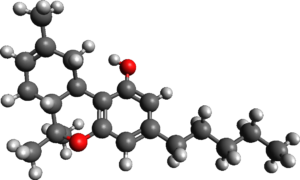 By far, the most popular of the emerging class of psychoactive hemp derivatives, Delta-8 THC produces an effect similar to Delta-9 THC, but is reported to be comparatively mild, with lower risk of the anxiety and paranoia often associated with cannabis consumption. Though often thought of as a new compound and frequently derided as “gas station weed,” Delta 8 is arguably neither of these things. The minor cannabinoid was first discovered by Dr. Raphael Mechoulam, in 1965 and has since been the subject of multiple studies. These efforts have revealed an extensive list of potential benefits, including anti-nausea, pain-relief, auto-immune suppression, and tumor reduction, suggesting that Delta 8 may deserve consideration as something more than just a stand-in for the “real thing.”
By far, the most popular of the emerging class of psychoactive hemp derivatives, Delta-8 THC produces an effect similar to Delta-9 THC, but is reported to be comparatively mild, with lower risk of the anxiety and paranoia often associated with cannabis consumption. Though often thought of as a new compound and frequently derided as “gas station weed,” Delta 8 is arguably neither of these things. The minor cannabinoid was first discovered by Dr. Raphael Mechoulam, in 1965 and has since been the subject of multiple studies. These efforts have revealed an extensive list of potential benefits, including anti-nausea, pain-relief, auto-immune suppression, and tumor reduction, suggesting that Delta 8 may deserve consideration as something more than just a stand-in for the “real thing.”
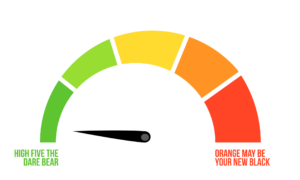
Delta-10 THC
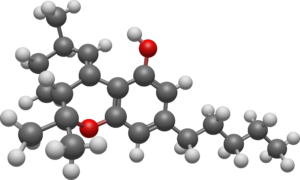
Delta-10 THC, yet another molecular neighbor to the compound most would consider synonymous with cannabis, naturally occurs in the plant at such miniscule levels that it is often mistaken in the lab for CBC or CBL. Discovered in 1984, Delta-10 is roughly half as potent as Delta 9 and is anecdotally described as the sativa to Delta 8’s indica, meaning users describe its effect as uplifting, in contrast to the relaxing effect provided by the Ocho. As of now, very little research has been done on Delta 10, primarily because of its extremely low natural occurrence in the plant. Interest has recently picked up steam, though, so expect to see more of it in the coming months and years, providing the feds don’t shake things up with another ruling.
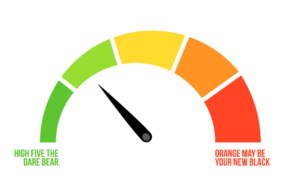
THCV
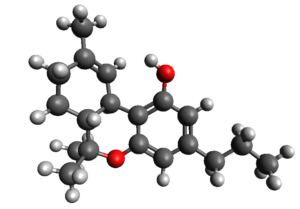
Often referred to as “Diet Weed,” THCV is a fascinating cannabinoid, in that its known effects are the inverse of what is typically associated with cannabis consumption. Instead of munchies, users report appetite suppression and reduction. In place of brain haze, we have reports of focus, along with a mild boost in energy. This inversion of effects makes sense when you consider how THCV is believed to function, which is by turning off the CB1 receptor, as opposed to Delta-9 THC, which is said to flip it on. The compound has been the subject of a flurry of recent scientific studies and interest, showing incredible promise in a litany of applications, from treatment of Type II Diabetes to a topical cream for hair restoration.

HHC
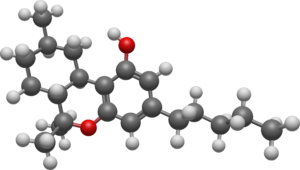
Hexahydrocannabinol, commonly dubbed HHC, is yet another relative of classic Delta 9 that naturally occurs in the cannabis plant in trace amounts. It was discovered in the 1940s by chemist, Roger Adams. However, “discovered” might be a misnomer, as Adams initially created the compound in his lab by adding hydrogen to Delta 9 THC. Much like Delta 8, HHC exhibits psychoactive properties that are mild compared to Delta 9. Also, like Delta 8, HHC has had positive studies on the books going back multiple decades (in this case, to 1977), despite its relative newcomer status in the marketplace. One of the most interesting and useful aspects of HHC, however, is the stability provided by the addition of hydrogen. Whereas THC will degrade over time and eventually convert to CBN, HHC will remain intact, guaranteeing a product with a much longer shelf life.

THCP
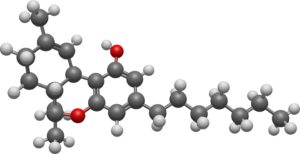 Italian scientists discovered Tetrahydrocannabiphorol (THCP) 2019 while conducting a series of studies on one of the two strains available under their government’s tightly controlled medical cannabis regime. Compared to Delta-9, THCP has an elongated side chain in its molecular structure, with the latter showing seven links, compared to five shown by the former. While this could mean basically anything to the scientifically uninitiated (including the writer of this article), what smart people have assured us is this: THCP is far more potent than the common THC we know and love. According to the research, THCP is 33 times more active on our CB1 receptors than Delta-9 THC. While that doesn’t exactly translate to THCP being 33 times more potent (estimates are around 10) it does mean that it’s incredibly strong. Approach with caution.
Italian scientists discovered Tetrahydrocannabiphorol (THCP) 2019 while conducting a series of studies on one of the two strains available under their government’s tightly controlled medical cannabis regime. Compared to Delta-9, THCP has an elongated side chain in its molecular structure, with the latter showing seven links, compared to five shown by the former. While this could mean basically anything to the scientifically uninitiated (including the writer of this article), what smart people have assured us is this: THCP is far more potent than the common THC we know and love. According to the research, THCP is 33 times more active on our CB1 receptors than Delta-9 THC. While that doesn’t exactly translate to THCP being 33 times more potent (estimates are around 10) it does mean that it’s incredibly strong. Approach with caution.

THCH
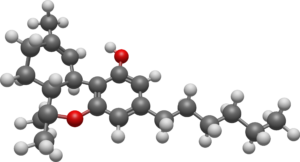
Discovered in 2020 by the same group of scientists who brought us THCP, Tetrahydrocannabihexol (THCP) is another potent new phytocannabinoid that we have little of and know next to nothing about. What we do know is that while not as potent as THCP, it still packs far more of a punch than OG THC, as it’s estimated to be ten times more active on our CB1 receptors.

Delta-9 THC

You can stop rubbing your eyes; you read that correctly. By the most technical, elastic and “letter over intent” understanding of the 2018 Farm Bill, Delta 9 THC—yes, that THC—can legally exist in hemp products, so long as it doesn’t exceed the magic number (.3%) relative to the overall contents of the product. We must remind you that this is not legal advice, nor should what you read here be your sole reason to carry products advertised to contain “hemp-derived Delta-9 THC.” Do your homework. That goes for all of these compounds, but especially for this.
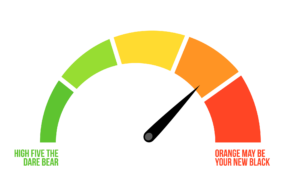
THC-O
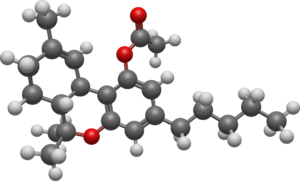
Known as the “psychedelic cannabinoid” for its mild hallucinatory effects, THC-O is a synthetic cannabinoid created through a chemical process involving several stages of conversion. The basic process is as follows: The lab tech will first extract CBD from hemp. They will then process the CBD into Delta-8 THC, at which point, they will add acetic anhydride, creating THC-O acetate. Thus, twice removed from its original legal constituent, and not naturally occurring in the plant at any quantity, THC-O is a fully synthetic compound, which the DEA now officially classifies as a Schedule 1 substance.
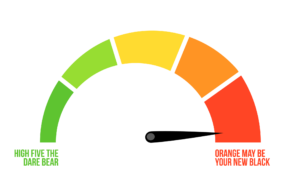
DISCLAIMER: This is not legal advice. This is information gathered from online and in-person sources, which you can use as a starting point to draw your own conclusion based on your research and the advice of your lawyer. HQ in no way claims to know how to interpret the legalese of Capitol Hill’s merry band of grifters, cons and clown-school dropouts. We’ll leave the lawyering to the lawyers, thanks.



